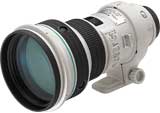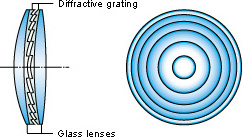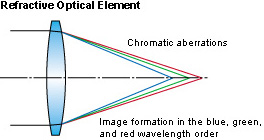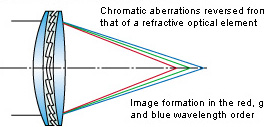 |
| EF 400mm f/4 DO IS
USM | A quick
definition will help you understand this exciting new Canon
lens technology. Glass lens elements refract, or bend
lightwaves as they pass through it to form an image. We use
multiple elements and special glass to keep the lightwaves
like a pinpoint instead of spreading them into the rainbow of
color you see when light passes through a prism. To diffract
lightwaves means that the ray goes through a change in
direction before passing through the lens. The change in
direction is caused by a diffraction grating — very fine
parallel groves or slits on the surface. Canon uses two
single-layer diffractive optical elements whose diffraction
gratings are bonded together face-to-face. The diffraction
that occurs with Multi-Layer Diffractive optical elements
actually corrects the optical system’s chromatic aberrations
and improve the image formation performance.
Why is
Canon changing the tried and true physics of lens design? In
terms of design and manufacture, it allows us to create lenses
that are shorter and lighter than comparable refractive
optical systems. The 400mm f/4 DO IS USM lens is approximately
27-percent shorter and 36-percent lighter in weight than a
conventional 400mm f/4 telephoto lens would be. Image quality
of Canon’s DO lenses are comparable to our L-Series, offering
photographers very high performance.
Note: If a very bright spotlight like a mercury
lamp is photographed with a DO lens, a ring of light may
occasionally appear around the light source, due to the
imaging characteristics of the multi-layer diffractive optical
element.


|







